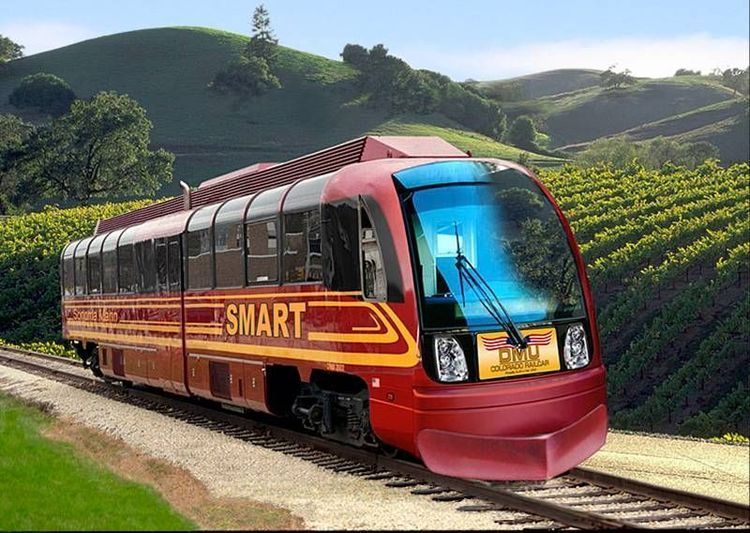
The Sonoma-Marin commuter train faces a pivotal decision this week, as its directors choose the type of rail cars they will design the rest of the line to match.
{mp3remote}http://media.krcb.org/audio/nbr/7-14-09/mp3{/mp3remote}
The SMART Board of Directors Meets on Wednesday, July 15 at 12:30 pm in the Sonoma County Board of Supervisors chambers to consider the railcar purchase and other business.
 The regulatory standards set by the US Federal Railroad Administration are the biggest single factor shaping SMART's choice for new rolling stock (as railroad cars are often called). SMART General Manager Lillian Hames explains those standards are especially stringent in situations where freight and passenger trains share the same set of tracks.
The regulatory standards set by the US Federal Railroad Administration are the biggest single factor shaping SMART's choice for new rolling stock (as railroad cars are often called). SMART General Manager Lillian Hames explains those standards are especially stringent in situations where freight and passenger trains share the same set of tracks.
{mp3remote}http://media.krcb.org/audio/nbr/fra.mp3{/mp3remote}
 The global financial woes of the past year are also affecting SMART, Says Hames, particularly their plans to issue bonds against future sales tax revenues. They are hoping to bridge the funding gap with grants, cost savings in planning and construction, and other measures.
The global financial woes of the past year are also affecting SMART, Says Hames, particularly their plans to issue bonds against future sales tax revenues. They are hoping to bridge the funding gap with grants, cost savings in planning and construction, and other measures.
{mp3remote}http://media.krcb.org/audio/nbr/dumpfuture.mp3{/mp3remote}
 One of the variables tied to the choice of rail vehicles that SMART will use is the height of the floor height above the tracks, which is a function of such design considerations as fuel tank placement and structural engineering. The difference could be 24 inches or more, but either way, the passenger loading platforms at each of the 15 stations along the line will have to be built to match the train's floor level, so that wheelchair users can easily access the cars. These new platforms, says Hames, will likely look quite different than the wooden decks seen along historic train stations.
One of the variables tied to the choice of rail vehicles that SMART will use is the height of the floor height above the tracks, which is a function of such design considerations as fuel tank placement and structural engineering. The difference could be 24 inches or more, but either way, the passenger loading platforms at each of the 15 stations along the line will have to be built to match the train's floor level, so that wheelchair users can easily access the cars. These new platforms, says Hames, will likely look quite different than the wooden decks seen along historic train stations.

 Live Radio
Live Radio